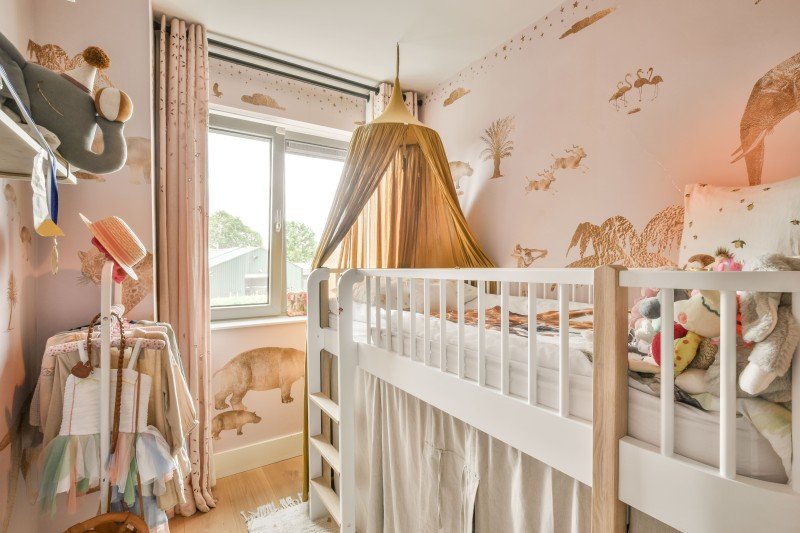The Ultimate Guide to Bunk Beds for Children: Safety, Styles, and Benefits
When it pertains to styling a child's room, parents typically deal with the double challenge of taking full advantage of space while ensuring comfort and performance. Bunk beds have become a popular service that addresses these needs, using not just sleeping plans however also adding to a space's aesthetic. In this detailed guide, we will look into different elements of children's bunk beds, concentrating on their benefits, safety functions, designs, and considerations for moms and dads pondering this purchase.
Table of Contents
- Benefits of Bunk Beds
- Safety Features to Consider
- Types of Bunk Beds
- Design and Style Options
- Maintenance Tips
- Frequently Asked Questions (FAQs)
1. Advantages of Bunk Beds
Bunk beds use numerous benefits for children and their moms and dads. Here are some essential advantages:
- Space-Efficiency: Bunk beds are an excellent service for smaller sized spaces. By stacking one bed on top of another, more flooring space is available for play, storage, or study locations.
- Affordable: When children share rooms, bunk beds can minimize the need for purchasing two different beds, hence saving money.
- Promotes Social Interaction: Bunk beds can assist siblings or good friends bond by sharing a space, creating opportunities for social development.
- Fun Factor: The principle of sleeping "up high" adds a playful aspect to bedtime, making the shift to sleeping alone much easier for some kids.
- Versatile Design: Bunk beds can be found in numerous styles, colors, and creates to match any room style, allowing for personalization that shows the kid's personality.
2. Safety Features to Consider
Safety is critical when it comes to children's furnishings, particularly in the case of bunk beds. Here are some vital security functions to evaluate:
| Safety Feature | Description |
|---|---|
| Strong Construction | Frames made from strong wood or metal are chosen. |
| Guardrails | Must be at least 5 inches high and extend along both sides of the upper bunk. |
| Ladder Design | Make sure ladders are firmly connected and have non-slip steps. |
| Mattress Size & & Fit | Should fit snugly within the frame to avoid gaps. |
| Weight Limit | Always comply with the producer's weight limitation recommendations. |
3. Kinds Of Bunk Beds
Bunk beds come in a number of styles, dealing with various needs, choices, and room sizes. Here are some typical types:
- Standard Bunk Bed: The the majority of standard type, with one bed on top of another.
- Loft Bed: Features a high upper bed with space below for a desk or play location.
- Futon Bunk Bed: Combines a leading bunk with a futon on the bottom, offering flexibility for seating and sleeping.
- L-Shaped Bunk Bed: This style has the top bunk set at a perpendicular angle to the bottom, producing a small corner location.
- Triple Bunk Bed: Accommodates 3 kids using stacked beds, ideal for big families or sleepovers.
4. Style and Style Options
When it concerns choosing a style for children's bunk beds, the alternatives are virtually limitless. Here are some popular designs:
- Traditional Style: Often made from wood, these bunk beds feature ornate details and are ideal for traditional or rustic-themed spaces.
- Modern Style: Characterized by clean lines and minimalist designs, modern bunk beds can be made from metal or wood.
- Themed Bunk Beds: Some brands use bunk beds shaped like castles, cars, or playhouses, making bedtime less of a task.
- Convertible Bunk Beds: These can be separated into two specific beds, offering versatility as kids grow.
- Colorful Options: Bunk beds in dynamic colors can add a sense of pleasure and playfulness to any room.
5. Maintenance Tips
Preserving a bunk bed is important for longevity and safety. Here are some pointers:
- Regular Inspections: Check for loose screws or bolts every few months and tighten them as required.
- Cleaning up: Wipe down frames regularly to prevent dust build-up; consider using a vacuum for hard-to-reach areas.
- Mattress Care: Rotate bed mattress frequently and use protective covers to lengthen their life.
- See for Wear and Tear: Look for any signs of damage in the wood or metal and think about changing parts if necessary.
- Teach Kids Safety Rules: Encourage children to utilize ladders effectively and guarantee they understand the safety functions of their bed.
6. Regularly Asked Questions (FAQs)
Q1: What age is proper for sleeping in a leading bunk?
A1: Typically, children aged 6 and older are recommended for upper bunk sleeping, as they have the necessary motor skills to climb securely.
Q2: Do bunk beds include a bed mattress?
A2: Most bunk beds are offered as frames just, so you will require to buy bed mattress separately. Ensure that the bed mattress fits the frame comfortably.
Q3: Can bunk beds be separated later on?
A3: Many designs permit conversion into 2 specific beds, offering versatility for future needs.
Q4: How can I guarantee my child's security on a bunk bed?
A4: Comply with security standards and ensure guardrails, a strong frame, and a protected ladder are in place.
Q5: Are there weight limits on bunk beds?
A5: Yes, constantly check the maker's requirements concerning weight limits to make sure safety.
Bunk beds for children can serve multiple purposes while guaranteeing safety and design. With diverse styles and designs offered on the market, parents can discover a system that not only optimizes bedroom space however also shows their child's distinct tastes. Just like Bunk Beds Children's georgevreeken.top , understanding security features, upkeep, and how they suit a child's lifestyle will make sure that these beds remain a practical furniture option for years to come.
Through careful consideration and adherence to security standards, bunk beds can provide a lasting, enjoyable, and practical sleeping option that kids like.

